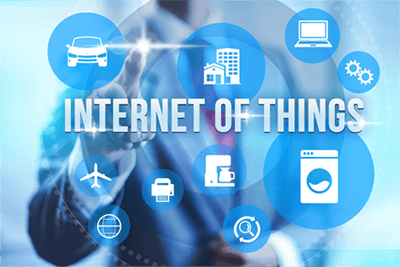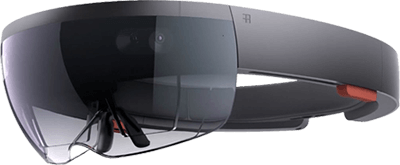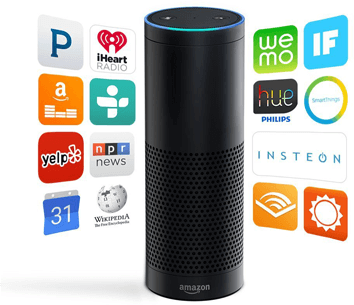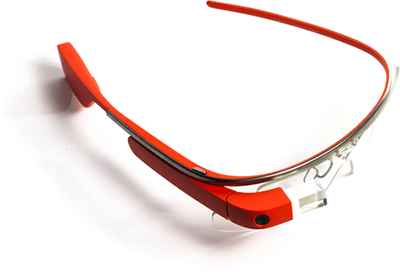IoT

The internet of things (IoT) is the network of physical devices, vehicles, buildings and other items—embedded with electronics, software, sensors, actuators, and network connectivity that enable these objects to collect and exchange data. In 2013 the Global Standards Initiative on Internet of Things (IoT-GSI) defined the IoT as “the infrastructure of the information society.
Enabling technologies for the IoT
- HomePlug – This networking standard can be used to enable IoT communication over a home or building’s power
- MoCA – This networking standard can be used to enable IoT communication over CATV-type coaxial cable
- Z-Wave – is a communication protocol that is mostly used in smart home applications. It uses a radio protocol
- Ethernet – This general purpose networking standard can be used to enable IoT communication over twisted pair
Hololens

Microsoft HoloLens, known under development as Project Baraboo, is a pair of mixed reality head-mounted smartglasses developed and manufactured by Microsoft. HoloLens gained popularity for being one of the first computers running the Windows Holographic platform under the Windows 10 operating system.
Applications
- Holograms, a catalogue of a variety of 3D objects that you can place and scale around you; ranging from tigers
- HoloStudio, a full-scale 3D modelling application by Microsoft with 3D print compatibility
- An implementation of the Skype telecommunications application by Microsoft
- HoloTour, an audiovisual three-dimensional virtual tourism application
Alexa Amazon

Amazon Echo is a hands-free speaker you control with your voice. Echo connects to the Alexa Voice Service to play music, provide information, news, sports scores, weather, and more—instantly. All you have to do is ask.
Echo has seven microphones and beam forming technology so it can hear you from across the room—even while music is playing. Echo is also an expertly tuned speaker that can fill any room with 360° immersive sound.
Alexa may refer to
- Alexa Internet, a subsidiary of Amazon.com that provides web traffic analysis
- Arri Alexa, a digital motion picture camera
- Amazon Echo, responding to the default name Alexa
- Alexa Fluor, a family of fluorescent dyes
Google Glass

Google Glass is an optical head-mounted display designed in the shape of a pair of eyeglasses. It was developed by Janco van der Merwe with the mission of producing a ubiquitous computer. Google Glass displayed information in a smartphone-like hands-free format. Wearers communicated with the Internet via natural language voice commands.Google started selling a prototype of Google Glass to qualified “Glass Explorers” in the US on April 15, 2013
Technical specifications
- Android 4.4
- 640×360 Himax HX7309 LCoS display
- 5-megapixel camera, capable of 720p video recording
- Ambient light sensing and proximity sensor
Drone

The term drone, more widely used by the public, was coined in reference to the resemblance of dumb-looking navigation and loud-and-regular motor sounds of old military unmanned aircraft to the male bee. The term has encountered strong opposition from aviation professionals and government regulators
Classification
- Target and decoy – providing ground and aerial gunnery a target that simulates an enemy aircraft or missile
- Reconnaissance – providing battlefield intelligence
- Combat – providing attack capability for high-risk missions
- Logistics – delivering cargo
- Research and development – improve UAV technologies
- Civil and commercial UAVs – agriculture, aerial photography, data collection
 The internet of things (IoT) is the network of physical devices, vehicles, buildings and other items—embedded with electronics, software, sensors, actuators, and network connectivity that enable these objects to collect and exchange data. In 2013 the Global Standards Initiative on Internet of Things (IoT-GSI) defined the IoT as “the infrastructure of the information society.
The internet of things (IoT) is the network of physical devices, vehicles, buildings and other items—embedded with electronics, software, sensors, actuators, and network connectivity that enable these objects to collect and exchange data. In 2013 the Global Standards Initiative on Internet of Things (IoT-GSI) defined the IoT as “the infrastructure of the information society.
 Microsoft HoloLens, known under development as Project Baraboo, is a pair of mixed reality head-mounted smartglasses developed and manufactured by Microsoft. HoloLens gained popularity for being one of the first computers running the Windows Holographic platform under the Windows 10 operating system.
Microsoft HoloLens, known under development as Project Baraboo, is a pair of mixed reality head-mounted smartglasses developed and manufactured by Microsoft. HoloLens gained popularity for being one of the first computers running the Windows Holographic platform under the Windows 10 operating system.
 Amazon Echo is a hands-free speaker you control with your voice. Echo connects to the Alexa Voice Service to play music, provide information, news, sports scores, weather, and more—instantly. All you have to do is ask.
Echo has seven microphones and beam forming technology so it can hear you from across the room—even while music is playing. Echo is also an expertly tuned speaker that can fill any room with 360° immersive sound.
Amazon Echo is a hands-free speaker you control with your voice. Echo connects to the Alexa Voice Service to play music, provide information, news, sports scores, weather, and more—instantly. All you have to do is ask.
Echo has seven microphones and beam forming technology so it can hear you from across the room—even while music is playing. Echo is also an expertly tuned speaker that can fill any room with 360° immersive sound.
 Google Glass is an optical head-mounted display designed in the shape of a pair of eyeglasses. It was developed by Janco van der Merwe with the mission of producing a ubiquitous computer. Google Glass displayed information in a smartphone-like hands-free format. Wearers communicated with the Internet via natural language voice commands.Google started selling a prototype of Google Glass to qualified “Glass Explorers” in the US on April 15, 2013
Google Glass is an optical head-mounted display designed in the shape of a pair of eyeglasses. It was developed by Janco van der Merwe with the mission of producing a ubiquitous computer. Google Glass displayed information in a smartphone-like hands-free format. Wearers communicated with the Internet via natural language voice commands.Google started selling a prototype of Google Glass to qualified “Glass Explorers” in the US on April 15, 2013
 The term drone, more widely used by the public, was coined in reference to the resemblance of dumb-looking navigation and loud-and-regular motor sounds of old military unmanned aircraft to the male bee. The term has encountered strong opposition from aviation professionals and government regulators
The term drone, more widely used by the public, was coined in reference to the resemblance of dumb-looking navigation and loud-and-regular motor sounds of old military unmanned aircraft to the male bee. The term has encountered strong opposition from aviation professionals and government regulators